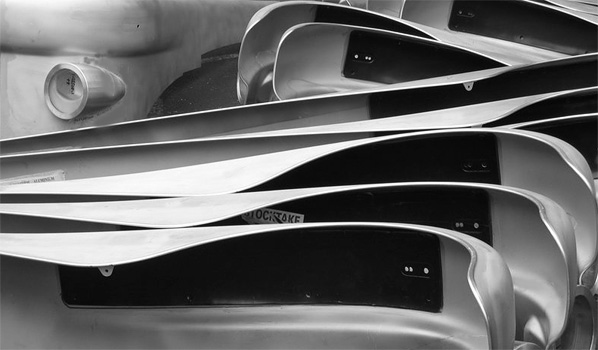 Morgan Wing
Types
Morgan Wing
Types
by Lorne Goldman
Wings are the most
distinctive and dramatic Morgan 4-wheeler feature. Their shape has brought
the Works from 1936 to 2006 intact. No one will argue that without them,
the company would have Peter'ed out (pun!) decades ago. As with any
Morgan project, opinions/experience is gathered, options sought and therefore
knowledge levels increase. This new stuff all settles in and compliments
one's own experience. In a nutshell, speaking with the wing makers and their
repairers in the last few weeks have given me a deeper perspective on these
signature parts.
1. VINTAGE
WING & RADIATOR (VW&R): Steel Wings
This is the original
supplier of Morgan wings until the Superforms (reviewed below.)
Pros: My opinion
of steel wings has risen.
A. They are impact resistant, protect the paint finish
and if properly prepared, are slow to rust. After our accident, I took my
old front wings (18 years old by then), had them sandblasted and we could find no signs
of rust. I primed them to protect them. (Shiny mild steel rusts in hours).
and they are now in use on Button's car.
B. When they do rust,
one easily can weld in a patch.
C. They are inexpensive.
D. All wing styles from
all eras can be provided as they are handmade, not poured into a mold.
Cons: They
can rust. As well, they come poorly made with a wide variance in dimensions,
fit and preparation time. They crack at the wing
light and corrode at their stays/braces if proper measures are not taken.
However, all of this is repairable.
| WATCHPOINT FOR STEEL WINGS: The paint can crack around headlamp nacelles (aka headlamp pods) where they are soldered with brass to the wings. The paint reacts with the brass and come away. Common problem with the cars from the Factory years ago. The alleged problem was poor
finishing and adhesion of the filler used to smooth the joint around
the pod after it was weldedin. When brazing with brass, residues
(scale) remain which must be removed very, very well. Sandblast the
area and cover with filler (aka bondo). A
successful precaution has been to take a sharp penknife and dig
out the original filler on the front strengthener of the wing
before heating. It's this filler that absorbs the moisturesetting up
the corrosion cell with the aluminium. The most effective answer is to “lead load” the joint ..an old technique used years ago where the
operator used Mole Skin gloves to smooth molten lead. |
Protection
Factors
2. VINTAGE
WING & RADIATOR (VW&R): Aluminum Wings
Pros:
i. Lighter than
steel..but much less so than has been officially reported in the past.
ii. Corrosion resistant
outside of the infamous edge.
iii. Can be welded (but
with a higher standard of care than steel).
iv. They are inexpensive.
v. If one starts from
scratch, (no pun) and prepares them very carefully (as described below).
They can last many years. However, that type of prep cost puts them in the
range of Superform wings without Superform advantages.
Cons:
a. The way the steel
wire is installed in the edge, coupled with the Factory prep normally pre-determines
the death of these wings. Unless they are redone before it is too late and
very careful steps are taken to completely seal the wire from moisture, corrosion
MUST occur. The combination of steel, aluminum, water and the vagabond electrical
charge all cars have throughout spells doom for these wings as, to date,
when the edge goes, so does the wing.
In some countries
and climates, namely the UK or the North American northwest coast, one can
only retard the process as the only way to stop the electrolytic reaction
is to open the edge, remove the steel wire, remove/repair the corrosion,
and replace the wire with something else of sunk in non reactive sealant,
then the edge must be refolded, a covering flange welded over the seam and
the tabs replaced.
b. Their soft alloy cannot
protect the surface paint. Star fractures are common. Welding extra plates
on the underside has not proved to help. The best solution seems to be one
I have seen developed independently on both sides of the Atlantic. That is
an impact coating, (which can be covered with 2 pack black) and glued rubber
padding in the key areas.
c. Their soft alloy
is prone to crack. Spot/fog lights, stays and braces wing lights. It is in
these areas that extra plates can help.. not with the star fracturing but
the stress cracking.
d. Like the VW&R
steel wings, they are awkwardly made and inconsistently finished..adding
to the costs of prep.
IMPORTANT!! Additional
information. Click HERE
Protection
Factors
3. SUPERFORM: Aluminum Wings
October 2004 (2012 updates italics) (2019 updated again)
These wings, a
feature on Morgans made after 1996 (from memory) are vastly different
from earlier wings. They are now used on ALL Morgan models..no other
options from the factory any more. The alloy used has, as its goal, its
susceptibility to plastiforming rather than panel beating. Also, there
are precious few choices for shape now. I would recommend steel
wings for replacements for pre-Superform Morgans. Infinitely
repairable. If a Morgan is not capable of owner/local garage
interaction, what is it?
Pros:
a. Made
from an extremely hard aluminum alloy that has proven itself to be VERY resistant
to star fracturing. I have been traveling 4 miles of gravel road at speed
almost each day during the season for 3 years without a fracture yet. (originally
written in May 2006 and still no fracture in November 2012)
b. Very light..more so
than VW&R alloy wings above.
c. Very easy to weld.
d. They arrive with an
(almost) perfect finish. So little prep or putty is necessary that their
much higher price is mitigated by a saving of £350-400 per set in saved
labor.
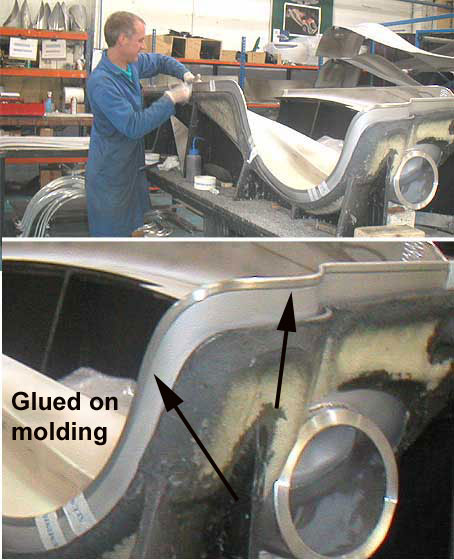 e. Instead of a steel
stiffening wire at the edge, they employ a grooved aluminum molding that
is bonded on. Ergo no corrosion anywhere, assuming you do not prejudice that
with a steel to metal add-on and a bit of care is taken with the fittings
through the wings (easy to do).
e. Instead of a steel
stiffening wire at the edge, they employ a grooved aluminum molding that
is bonded on. Ergo no corrosion anywhere, assuming you do not prejudice that
with a steel to metal add-on and a bit of care is taken with the fittings
through the wings (easy to do).
f. They have a plate
welded on the underside at the wing lights, offering greater protection there
for cracking. If the pressure is spread with the use of a large washer, that
is sufficient to prevent spot/fog lamps from cracking the wings.
g. Not much need for
wing protect underneath, save a quick coat of black impact paint, more to
cover the Factory overspray than anything
else.
Cons:
1. There is a very limited
choice in styles. With the Superform process, each wing style requires a
very expensive mold and that has limited the choices. (I advise owners
to considet the headlight pod placement and consider whether it is wiser
to order the wings with pods uninstalled. This will not allow you to place
the pad as you wish rather than adopting another style, but it will also
speed the delivery considerably)
2. The delivery time
is long and getting longer. (This situation has not improved after 10 years of watching but who knows?)
The design
also had a flaw for many years (until 2004 at least) that affected the turning
circle. The "groove" at the wheel wells is too severe and caused the tyres
to rub badle at full lock in either direction. The rubbing caused the paint
to blister and the wing to loosen. To prevent this, opne must stop the steering
from attaining full lock. This can be done by have a made-to-measure rack
and pinion steering rack made or fashioning anouther system, (like I did.)
In either case, the turning cicule is badly prejudiced. A complaint was made
to the Factory under the warranty, but refused.
3. The wings are
very expensive. More than double the price of the VW&Rs (but then there
is the large prep work saving). Only purchasable through the Morgan
Factory or their Agents.
4. The Factory will not
sell owners the molding. If it is twisted of damaged, even if you can repair
the wing itself, you will be forced to buy a new wing, cut, prep, paint and
fit it.
5. They require special
paint preparation or bubbling quickly occurs. On this issue click BUBBLING
CURE
I was a big
fan of the Superforms at the start and I have had both my cars superwinged.
I have learned to accept their design issues and I have, at great expense,
learned to control their bubbling. But it must be said that Superforms have
not stood the test of time as well as the original hand made wings did. Fifteen
years of Morgan Superforms have left a heritage of bubbling paint and
tales of inter-metal corrosion on every Mogger forum. The Company has not
responded, so it is not known whether redress could be had or a cure ever
discovered. The best Morgan resprayers are ill-at-ease painting a Superform
car (classic or Aero) and some refuse to take on the job or offer no guarrantees.
They have been hurt with the comebacks on Superform work.
This is made
all the more more sad in that other companies who use Superform, do not have the same
experiences. It is speculated that the problems are in the Morgan paint preparation
techniques. IMPORTANT!! For additional
information click SUPERFORMS
Protection Factors
UNDERWING PROTECTION
by Lorne Goldman
INTRODUCTION
I often wonder whether
Morgan owners, especially those who have joined the community since
2000, fret more than they drive. (wry smile) Many spend much time figuring
out fixes that they have no need of, or that apply to other eras and not
their own cars. Of course, I will not argue that the newer Morgans have a
whole host of issues that older Morgans never experienced, and many of these
have yet to be cured, but there is no need to fix things that do not require
fixing. I am struck by these thoughts as I start this article on protecting
Morgan wings from the consequences of debris impact (which expresses
itself in star fractures in the paint finish on the other side). For these
reasons, I will start with the newer wings first and move to the classic
wings after.
By way of experience,
I have had and still have a number of Morgans with all the metal wing types
used since 1950 to 2012. Each year I mog 7500 miles in the UK and Europe
and 10,000 miles in Canada and the USA as minimums. In Canada, I live at
the end of a gravel road of 2.5 kms, which I take at speed. This is a thorough
a testing of Morgan wings as one can find these days.
PROTECTION
FOR SUPERFORM WINGS
Morgans no longer
sport hand-beaten wings. All Morgan wings have been made by the Superform
process since the late 1990s. There have been issues (see above). However, debris damage is not one of them.
I believe this concern might have begin by associated the vulnerability of
the earlier alloy wings to this type of damage. But the
Superform aluminium alloy and the aluminium alloy that was form beaten by
Vintage Wing & Radiator into Morgan wings in the old days are not alike.
Superforms are heat molded and the VW&Rs are hand beaten. The molding
process allows for a MUCH harder alloy to be used. Indeed, after the company
mistook a bad fitting
issue mistake for metal weakness, (they fitted slotted wing stays
that often rubbed holes through the Superform wings) they added
an unnecessary section of extra metal protection in the impact zone after
2004 which makes imact damage even less possible. I haven't bothered with
any protection with my pre-2004 and or post 2004 Superform wings and neither
has ever been a victim of road debris or a star fracture with absolutely no
protection whatsoever. As well, any impact capable of cracking the paint on
a Superform wing will also dent the metal anyway, requiring a invasive repair.
If you are fixated on some protection, you can try a very light spray can
coating of a gravel guard, more to cover the Factory's paint overspray than
anything else. Don't waste your time and money on more than that.
| Morgans' forte are
their lightness and simplicity. Don't weigh them down with non aesthetic
stuff they don't need. It only adds to the things that will go wrong and
lightens only one thing, your pocket book. |
PROTECTION
FOR STEEL WINGS (1936-1998)
The story with steel
wings (also made by Vintage Wing & Radiator by form beating), is pretty
much the same as Superform. I have not known them to be vulnerable to stone
or gravel impacts that cause paint fracturing. Again, any impact capable
of cracking the paint on a steel wing will also dent the metal anyway and
require an invasive repair. If you are fixated, you can try a very
light spray can coating of a gravel guard, more to cover the Factory's paint
overspray than anything else. Don't waste your time and money on more than
that. (For goo'ed (MMC undercoated) cars, even this is not only impossible,
it is totally unnecessary) Many question the wisdom of covering impact-resistant,
unrusting metal and color-coded wires/connectors with thick non-hardening
tar. Many owners go through hell removing it. It takes an average of 60-80
hours..then a careful finishing off with a professional steam cleaner. However,
its removal makes maintenance and repair much easier and gives the subject
a running chance at a Concours. I have never seen a Morgan win an award proper
Concours if they have been goo undercoated.
PROTECTION
FOR THE EARLIER ALLOY WINGS
These are the wings
that have the need for protection (and gave mistaken reputation for the same
to the other Morgan wings above, especially to new 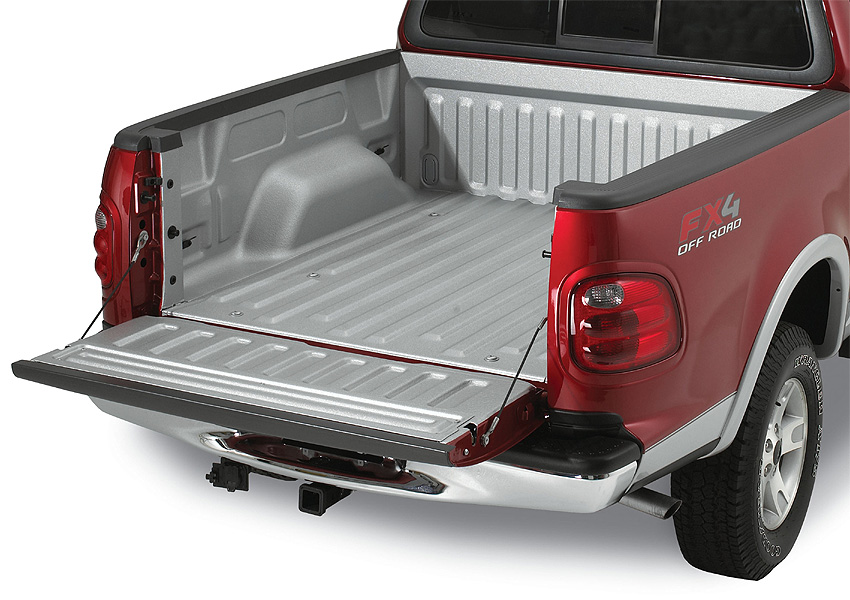 owners. In order to make them capable of hand forming, these wings had to
be made of a soft alloy. That means they are very vulnerable to road debris.
They can be properly protected. However, this will add weight negated some
or all of the poundage advantage they had.
owners. In order to make them capable of hand forming, these wings had to
be made of a soft alloy. That means they are very vulnerable to road debris.
They can be properly protected. However, this will add weight negated some
or all of the poundage advantage they had.
Some solutions that
work;
1. BED LINER:
The best VW&R
alloy wing protection I have seen yet was done by Lance Lipscomb of U.S.
state of Georgia. Lance is the owner for one of the most stunning Plus 8s
I have ever seen. Lance totally restored his Morgan years ago and had the
wings stripped. Before painting, he had the wings' 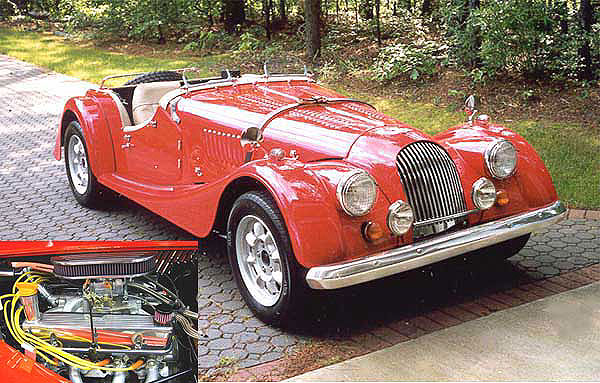 undersides professionally coated with a pickup truck bed liner, creating
a impact resistant and waterproof surface. Perfect!
undersides professionally coated with a pickup truck bed liner, creating
a impact resistant and waterproof surface. Perfect!
2. COATING by
Tudor
Another fine solution
can be had at Tudor Motors,
master restorers in Shropshire in the UK. They will use an etch
primer underneath, then 2 coats of a quick drying anti-chip coating (for
these wings) and then a black 2-pack gloss.
3. FLOOR TYPES
I have seen Morgan
old-timers use self-adhesive rubberized floor tiles. However, the surface
has to be very clean and dry before installation.
4. GOO by Morgan
For many years of
the years after 1990 many alloy winged Morgans arrived with an optional undercoating
of a gooey non hardening tar product that covered the wings and the wiring.
It was not a rust protection as alloy does not rust. It also gathers and
holds road dirt. However, it did provide protection for the earlier soft
alloy wings. Sadly, without the goo removed, other options are precluded.
Many question the wisdom of covering impact-resistant, unrusting metal
and color-coded wires and their connectors with thick non-hardening tar.
Many try to remove it. It takes an average of 60-80 hours..then a careful
finishing off with a professional steam cleaner. However, it makes maintenance
and repair much easier and gives the subject a running chance at a Concours.
I have never seen a goo-ed Morgan win at a Concours.
5. One product that
provides non-invasive (removable) protection for the VW&R alloy winged
cars is a wing liner made by Vic Championess of
Black Phey. It clips on the undersides of the front and rear wings and
is attractive and fool-proof. It should not be used with goo-ed cars
as it is should be unnecessary and simply sandwiches the goo between metal
wing and plastic protector.
WING PIPING BEADING (revisited April 2025)
History
by Jean-Frederic Frot
For the benefit of newcomers and originality geeks and concours adepts, a
brief history of the wing piping through the ages (strong coffee prior
to reading highly recommended).
From the 1930s to the
mid-1980s, wing piping was a very cheap black plastic solid
affair made of a 8mm bead (bulb) and a 40mm wing. It was fitted between
the body and the wings and number plate valance in one piece from the
front of the bulkhead to the same joint on the other side to hide any
imperfection between the panels and to a lesser degree to avoid ingress
of water between them. it was fitted whilst the panels were still in
primer and therefore was painted with the rest of the car at a later
stage. Two small lengths were also use between the cowl and the front
wings.
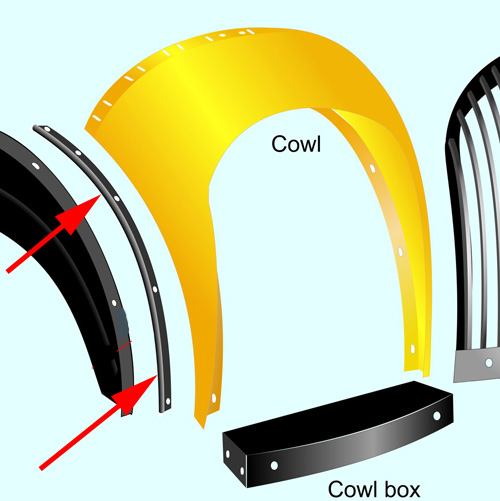 When a Morgan was restored by a specialist, it was
usually recommended to have a wings off respray as the hidden parts of
the wings were usually badly corroded. This meant that the piping was
fitted after the car was in its final colour and it would have been
difficult and expensive to spray the car once more to cover the black
piping only. So, instead of the plastic, Everflex, a more attractive textured vinyl coating onto a
woven cotton base sewn around a bead and available in many
colors was the material of choice. The color never matched the rest of
the car perfectly so the common practice was to choose the next darker
tone for the piping which enhanced the shape of the wings.
When a Morgan was restored by a specialist, it was
usually recommended to have a wings off respray as the hidden parts of
the wings were usually badly corroded. This meant that the piping was
fitted after the car was in its final colour and it would have been
difficult and expensive to spray the car once more to cover the black
piping only. So, instead of the plastic, Everflex, a more attractive textured vinyl coating onto a
woven cotton base sewn around a bead and available in many
colors was the material of choice. The color never matched the rest of
the car perfectly so the common practice was to choose the next darker
tone for the piping which enhanced the shape of the wings.
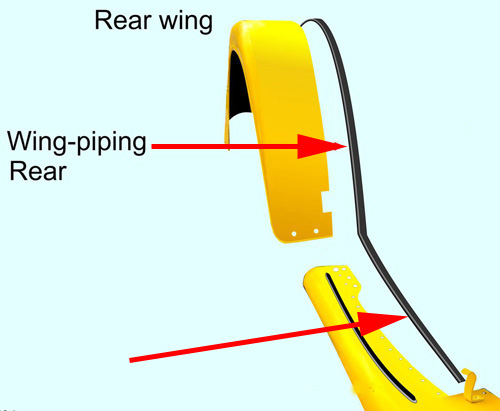
Other
crucial improvements at that time were also made by sealing the the gap
between the bulkhead, the valances and the chassis with a silicon
sealant, (Webmaster note 2: The
factory actually uses a cheap mastic which oozes out for
years. When the oozing stops, it is the sign to buy a new Morgan.)
The fitting between the rear plywood valance and its rail were
reinforced, putting an end to the whole tail of the car flapping on the
chassis on the older trads. All these mods were introduced on the
advice of amateur and professional restorers such as John Worrall. For
a two decade period (1980-2000) the cars improved mightily due a close
rapport between the Works, the community and dealers. Webmaster
Note 3: After the advent of the Charles Morgan regime, this period
quickly ended and there is no owner feedback into the cars whatsoever
to this day. (2025) Trad production ended in 2019.
A
while later the final touch came with the stainless steel bulkhead. We
owe that one to the white goods and food industry equipment suppliers
who were forced to replace enamalled steel by stainless thus bringing
the price of the latter material to an affordable level.
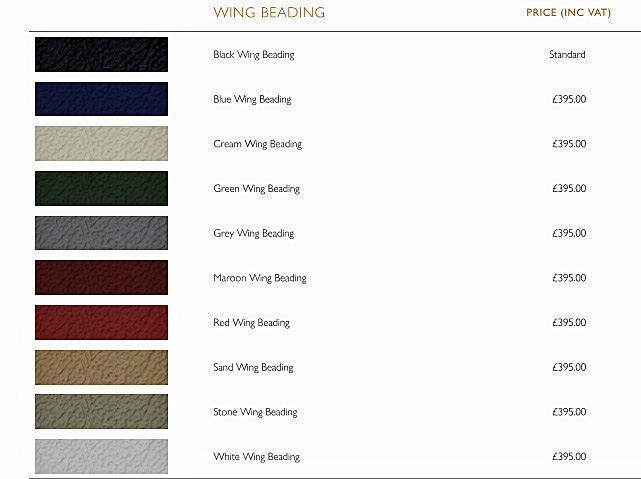 1. Though decorative it is also a must. It originally came in a rubber black but later, first
from the aftermarket (John Worrall) and then the Factory, copied them in many colors in the textured Everflex variants,
to match or compliment the car paint color.
1. Though decorative it is also a must. It originally came in a rubber black but later, first
from the aftermarket (John Worrall) and then the Factory, copied them in many colors in the textured Everflex variants,
to match or compliment the car paint color.
2.
It protects from the damage caused by metal on metal. Handmade and even
machine-made cars cannot be made so perfectly as to escape damage of
painted metal on metal.
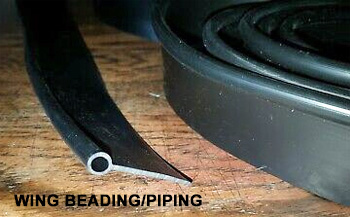 It
should be inexpensive stuff, and owners/sprayers who try to do without
it,
soon learn to error of their ways. Smart people buy it by the years for
3-8£ a meter for either the original plastic (now available from
Woolies in colors rather than only black) or honest dealers
like Brands Hatch.
It
should be inexpensive stuff, and owners/sprayers who try to do without
it,
soon learn to error of their ways. Smart people buy it by the years for
3-8£ a meter for either the original plastic (now available from
Woolies in colors rather than only black) or honest dealers
like Brands Hatch.
Smart
moggers buy the beading by the yard or roll and not a "kit". However,
predators like Melvyn Rutter sell it kit-form for 4-5 times the price
of others. The highest price by far is from the MMC, who sell it at
375£ for colored Everflex. (6 times Melvyn's price or 24 times
what other British marques pay!!) .
TROUBLE
POINT: LEADING EDGE REAR WINGS
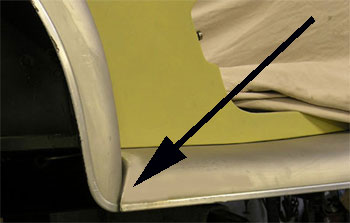 by Lorne Goldman
by Lorne Goldman
At the rear of
the front wings, where they meet the rear wings, there is a space is formed
between the two at the Factory as they cut the rears of the front wings straight
just where the rear wings are curving back. (Morgan wings arrive too long
and too wide so that they may be cut to each car. As all Morgan owners
know, the space they create there is open to road debris and the paint is
quickly ground off.
However,
rather than finishing the wings as they do, if one is replacing the
wings, work a bit
harder than the MMC and cut the front wings to curve to match the
curvature of the rear wings and close the space. The result is both
aesthetically pleasing
and very effective. This little mod allows the Morgan's rear wing to
remain untouched at this decade's old weak point.
 e. Instead of a steel
stiffening wire at the edge, they employ a grooved aluminum molding that
is bonded on. Ergo no corrosion anywhere, assuming you do not prejudice that
with a steel to metal add-on and a bit of care is taken with the fittings
through the wings (easy to do).
e. Instead of a steel
stiffening wire at the edge, they employ a grooved aluminum molding that
is bonded on. Ergo no corrosion anywhere, assuming you do not prejudice that
with a steel to metal add-on and a bit of care is taken with the fittings
through the wings (easy to do).  Morgan Wing
Types
Morgan Wing
Types  owners. In order to make them capable of hand forming, these wings had to
be made of a soft alloy. That means they are very vulnerable to road debris.
They can be properly protected. However, this will add weight negated some
or all of the poundage advantage they had.
owners. In order to make them capable of hand forming, these wings had to
be made of a soft alloy. That means they are very vulnerable to road debris.
They can be properly protected. However, this will add weight negated some
or all of the poundage advantage they had.  undersides professionally coated with a pickup truck bed liner, creating
a impact resistant and waterproof surface. Perfect!
undersides professionally coated with a pickup truck bed liner, creating
a impact resistant and waterproof surface. Perfect!  When a Morgan was restored by a specialist, it was
usually recommended to have a wings off respray as the hidden parts of
the wings were usually badly corroded. This meant that the piping was
fitted after the car was in its final colour and it would have been
difficult and expensive to spray the car once more to cover the black
piping only. So, instead of the plastic, Everflex, a more attractive textured vinyl coating onto a
woven cotton base sewn around a bead and available in many
colors was the material of choice. The color never matched the rest of
the car perfectly so the common practice was to choose the next darker
tone for the piping which enhanced the shape of the wings.
When a Morgan was restored by a specialist, it was
usually recommended to have a wings off respray as the hidden parts of
the wings were usually badly corroded. This meant that the piping was
fitted after the car was in its final colour and it would have been
difficult and expensive to spray the car once more to cover the black
piping only. So, instead of the plastic, Everflex, a more attractive textured vinyl coating onto a
woven cotton base sewn around a bead and available in many
colors was the material of choice. The color never matched the rest of
the car perfectly so the common practice was to choose the next darker
tone for the piping which enhanced the shape of the wings. 
 1. Though decorative it is also a must. It originally came in a rubber black but later, first
from the aftermarket (John Worrall) and then the Factory, copied them in many colors in the textured Everflex variants,
to match or compliment the car paint color.
1. Though decorative it is also a must. It originally came in a rubber black but later, first
from the aftermarket (John Worrall) and then the Factory, copied them in many colors in the textured Everflex variants,
to match or compliment the car paint color.  It
should be inexpensive stuff, and owners/sprayers who try to do without
it,
soon learn to error of their ways. Smart people buy it by the years for
3-8£ a meter for either the original plastic (now available from
Woolies in colors rather than only black) or honest dealers
like Brands Hatch.
It
should be inexpensive stuff, and owners/sprayers who try to do without
it,
soon learn to error of their ways. Smart people buy it by the years for
3-8£ a meter for either the original plastic (now available from
Woolies in colors rather than only black) or honest dealers
like Brands Hatch.  by Lorne Goldman
by Lorne Goldman